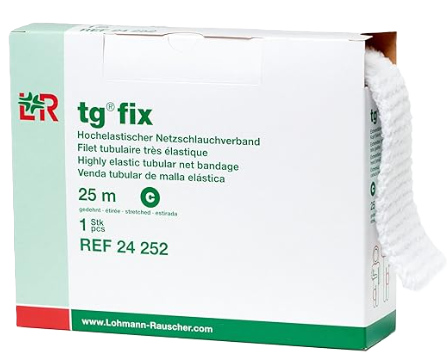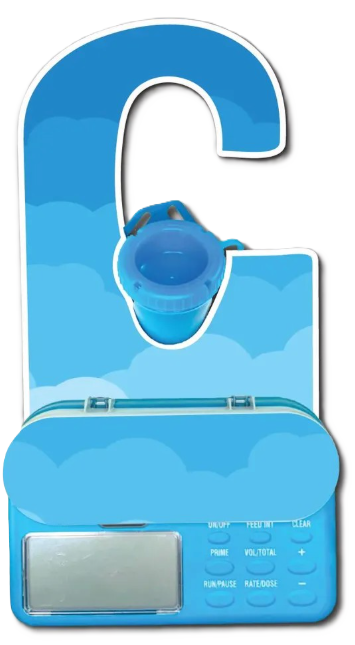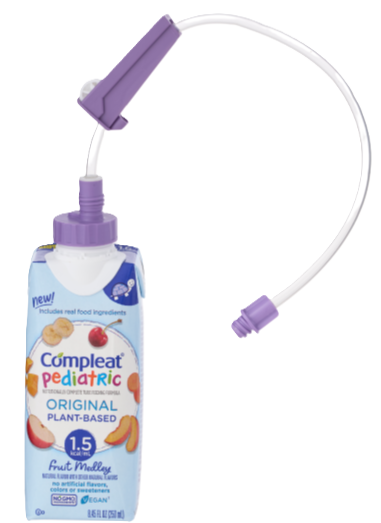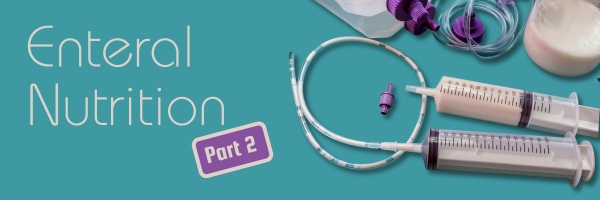
This newsletter is all yours.
As an organization founded by parents of children with special needs, nothing is more valuable at Ezreinu than a parent’s perspective, a parent’s preference, and a parent’s personal experience.
Two weeks ago, we opened our ears to comments, questions and suggestions from YOU, our heroic parents, and the response was huge.
Enjoy this collection of advice and tips for tube feeding; one parent to another.
Please note that information shared in this newsletter is for educational purposes only. Please direct all of your specific questions and concerns to your child’s primary care physician.

No Regrets
“Don’t fight the tube! It changed our lives for the better.”
“I did not regret it for a second.”
“The feeding tube is such a game-changer!”
When Doctor suggests that a feeding tube may be helpful or necessary, the natural reaction is to protest. Feeding tubes sound overwhelming, scary, and so “medical”.
Parents who have been down that route shared how they, too, were terrified to go through with the tube, but after the fact, the predominant feeling was one of relief.
A safe, consistent way to provide your child with very necessary nutrition or medication isn’t something to sneeze at. Many parents spend hours each day struggling through mealtime after frustrating mealtime. And all the feeding therapy in the world won’t help if a child isn’t getting what they need without the help of a tube.
Yes, there’s an adjustment period, but managing the tube gets easier every day. Give it some time to become a part of everyday life, and before you know it, you’ll be doing those feeds by rote without a second thought!
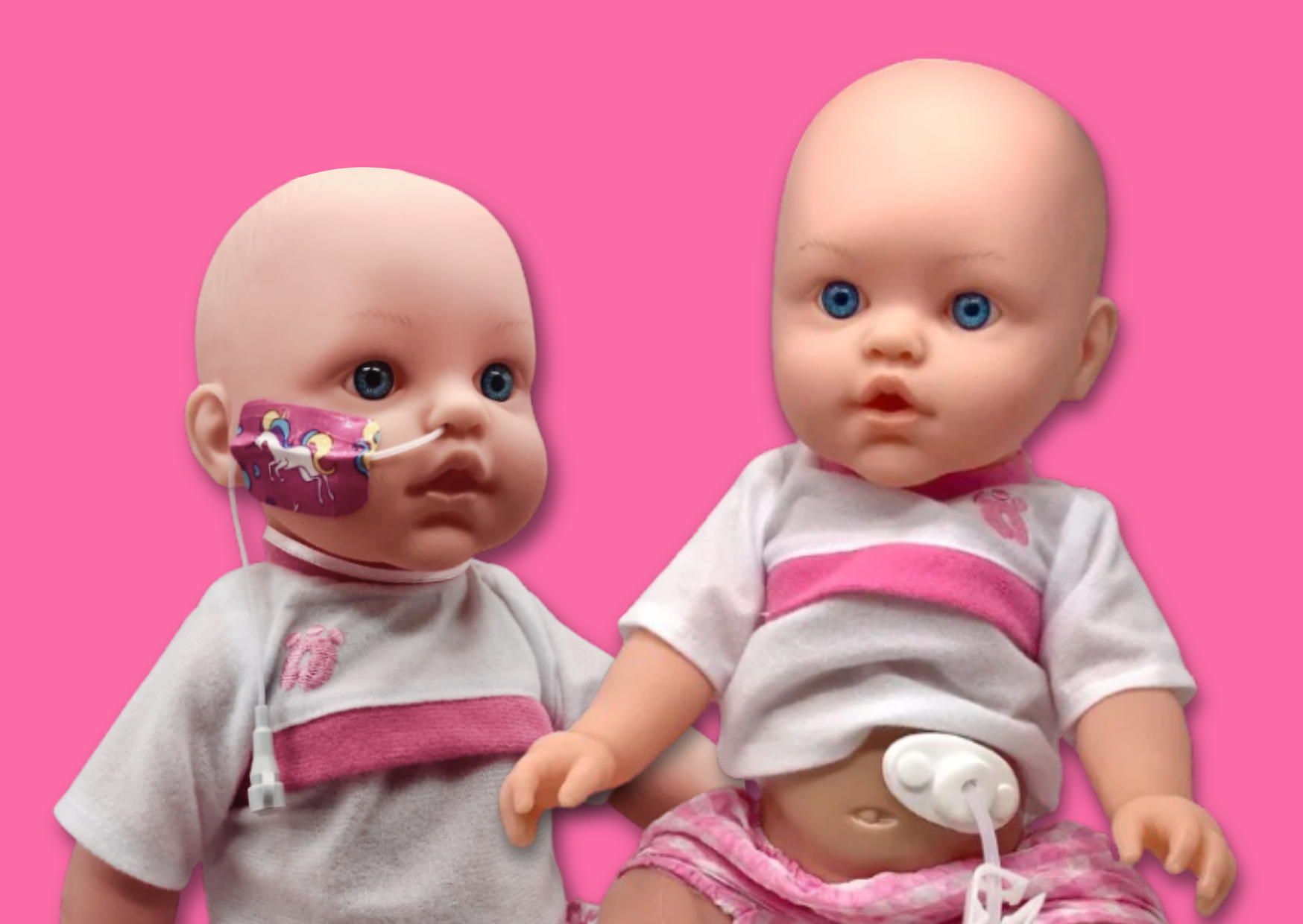
Go for the G!
“If given the choice between an NG-tube and a G-tube, go for the G!”
“Dealing with an NG-tube was so much harder than the G-tube.”
“G-tubes don’t mean your child will be permanently tube-fed.”
If you read our last newsletter, you learned that NG-tubes go through the nose and down the throat, while the G-tube is affixed to a surgical stoma in the abdomen. Although the NG-tube is far more conspicuous, many parents feel more comfortable with it and when given a choice by their doctor, opt to stick with the NG-tube because G-tubes seem more permanent.
NG-tubes are uncomfortable and children can easily develop a bigger aversion to eating and swallowing because of the pain. You know that feeling when a hair is stuck in the back of your throat? Or when you have a tender, post-virus sore throat and every swallow irritates it further?
That’s how an NG-tube feels.
Parents who made the decision to switch over to a G-tube shared how positive the experience was. The procedure is safe, simple, and not permanent at all. The stoma is just a small hole, and once the tube has been removed, it closes neatly on its own.
For very temporary situations, NG-tubes may be unavoidable, but for the longer term, it may be worth considering a switch to a G-tube. (It goes without saying that no two children are the same, and such a decision should never be made without guidance from your child’s doctor.)

All ideas provided below are general, informative tips for you to keep in mind. Please discuss all site-care decisions with your child’s doctor before implementing any of these suggestions.
NG/NJ-tubes are secured to the cheek with tape. For children who tend to pull it or who need it retaped frequently, first put a piece of DuoDERM down on the cheek, lay the tube on top of the DuoDERM, and then tape it down to the DuoDERM with either Tegaderm or Hypafix tape. This way, you only gotta change the top layer more frequently while the DuoDERM stays put for several days, allowing for less frequent irritating changes directly on the skin.
This tip also works for G/J/GJ-tubes – take the tubing or extension and secure it to the abdomen in the same way, about two inches away from the stoma.
Use Uni-Solve wipes to painlessly remove tape and adhesive residue left on the skin.
Less is more! If possible, keep the tube site without a dressing.
Clean the stoma twice a day with mild soap and water (consult your child’s doctor for recommendations) and place a split gauze between the tube and the skin.
Two common causes of granulation tissue:
If the tube is too big or two small, it will cause rubbing and irritation, which creates granulation tissue and can cause infection, as well.
Wetness! If your child’s tube site leaks often, change the dressing frequently. Don’t let the wet dressing sit on the skin.
To keep the site nice and dry, use Calcium Alginate or Mepilex dressings.
To remove granulation tissue, some great options are:
Triamcinolone (contains steroids)
Ciprodex (contains steroids)
GranuLotion (no prescription needed)
Silver Nitrate (very harsh – be extremely careful not to get it onto healthy skin)
There are a number of creams available (mostly marketed as diaper rash cream) which are excellent for an irritated tube site:
Calmoseptine
Balmex
Desitin
Ilex
After applying the cream, seal it with stoma powder to help keep the barrier.
A slip tip syringe fits directly into the Mini button and works great for a quick flush or meds when you’re on the go and don’t have an extension.
Always keep a just-in-case Ziploc bag with you, containing a spare button, a ready syringe filled with water, and a small packet of lube (or a saline bullet!) and you’ll be good to go for when that button pops unexpectedly.

Is your current DME provider giving you a headache?
A LOT of parents recommended Elm Pharmacy in Brooklyn as a top DME provider for feeding tube supplies.
Good Stuff
Tube keeps moving out of place? Get some of this cheap, easy elastic netting to wrap around your child’s middle, keeping the tube secure.
This cute little pill crusher is a great, fast way to crush pills for a feeding tube.
This cool thingamajig is called a Flying Squirrel (don’t ask me why) and it’s super helpful for hanging anywhere and holding the pump and the bag in place.
Bolink caps connect directly to formula cartons, making bolus feeds neat and easy.
With much appreciation to our experienced and knowledgeable readers for contributing so much information to this newsletter.

Mrs. Levy enjoyed connecting with other mothers whose children shared a diagnosis with her son, but she was struggling to find a peer whose child’s condition presented in the same unusual way as her own son’s. She reached out to Ezreinu and was put in touch with a fellow parent who was dealing with a similar situation and was able to provide the support she needed. ⬛
Gavriel, a sweet little boy with special needs, has a short school day. All afternoon at home, he needs an amount of attention which is just impossible for his mother to provide with the other kids around. Gavriel’s mother reached out to Ezreinu, and received information about a local after school program where kids just like Gavriel spend each afternoon having fun and eating supper while being cared for by devoted respite volunteers.
Identifying details have been changed to protect client confidentiality.
Liked this post?
Get bi-weekly updates directly to your inbox.

